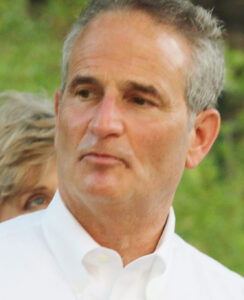
Jim Eskin Says, “Listen To – Don’t Hear – Major Donors” is one fundraising veteran’s take on major gifts fundraising. Let’s hear what Jim has to share:
If there are two core obsessions that successful fundraisers must have, they are first, embrace every opportunity to convey heartfelt gratitude, and second, exercise and continually improve the ability to genuinely enjoy listening and understanding donor prospects — and for that matter, everyone else involved in your essential work of developing and nurturing relationships that can mature into sustaining friendships.
The joy of thanking donors is self-evident. Donors are making difficult choices about what to do with finite resources of time, talent and treasure, and are forced to decide not between the good and the bad, but between the good and the good. Remember the 7X Rule of Thumb: Every donor, whether their gift is $100 or $1 million, should be thanked on seven distinct occasions during the year.
Listening is more complex. It’s much more substantive than hearing words that are being spoken. The goal is to participate in “active listening,” in which other parties can actually feel and experience our interest in their every act of communication, verbal and nonverbal alike.
Jim Eskin Says, “Listen To – Don’t Hear – Major Donors”
Based on my experience leading advancement operations for three institutions of higher learning, and now as a fundraising trainer/consultant advising a wide range of non-profits spanning all different sizes and missions, here are 10 lessons I like to highlight.
- Listening is supreme: My mentor Laura Fredricks, CEO and Founder of THE ASK©, who I am proud to crown the ASK Laureate, says that in the most productive donor meetings, the donor speaks 75% of the time while the fundraiser speaks only 25%. This heightens the importance of active listening and also makes it imperative that the fundraiser makes every word they utter count.
- It’s much more than words: A landmark study by Mehrabian and Wiener concluded that only 7% of the communications judgement was based on the actual words, 38% was based on tone, and 55% was based on facial expressions (i.e., a total 93% nonverbal judgement). In other words, you cannot overstate the importance of eye contact and the powerful appearance of both the donor’s and your gestures during the conversation.
- Probe for meaning: Many times, what donors are saying will need clarification. It will demonstrate your commitment to understand them, when you ask, “Could you please explain or clarify what you mean?”
- Never overwhelm donors: We strongly advise that there never be more than twice the number of nonprofit representatives in the meeting as on the donor side. The typical approach is sending a board member who has a personal relationship with the donor, accompanied by a staff member. The nonprofit representatives should prudently determine ahead of time who is going to say what.
- Minimize the use of printed and/or collateral material: A common error is reading or reviewing a written proposal. No matter how well written or attractively designed, collateral material should be presented at the end of the meeting and speak for the nonprofit when their representatives are no longer present.
- Video-conferencing meetings should be intentionally planned to be shorter: While the use of this new technology is being more widely accepted than ever before — because it is so time efficient and opens the door to the engagement of participants separated by distance — it is much more tiring and intense than a face-to-face meeting. Plan on video-conferencing meetings to be no more than two-thirds the length of an in-person meeting.
- Enter every donor meeting with specific objectives: Whether the purpose is discovery, cultivation, solicitation or stewardship, know in advance what kind of information you want to obtain from the donor that you didn’t have before.
- Taking notes can be a mixed bag: Of course, you need to document the meeting with an accurate summary that can be entered into your database. If you are meeting alone with the donor, you might want to wait until the meeting is over to write your notes so that you don’t sacrifice all-important eye contact. But if there are two of you representing the nonprofit, one participant, typically staff, can be responsible for taking real-time notes.
- Be sensitive to the donor’s schedule: Go into the meeting with a mutually understood timeframe. The donor will be giving you clues on their willingness to continue talking. Signals such as looking at smart phones and watches are clear indications they are ready to conclude the meeting. Since time is so precious, be sure to keep opening pleasantries to a minimum and immediately move to your priorities for the meeting right at the start.
- Sum up the meeting before you leave: Take a few minutes to review the major points you have heard the donor make. Ask him/her if anything is missing. I also recommend sending e-mails expressing appreciation for their time and summarizing the main points you heard. If you really want to make a positive impression, send a handwritten note as soon as possible after the meeting. This will give you an opportunity to really stand out.
Everyone loves to be listened to. In fundraising we have an old saying: Ask for money and you get advice but ask for advice and you can get a gift. Relationships — better yet, friendships — are built on trust, which is not possible without strong two-way communication. Commit to a regular schedule for listening to your donors, whether it is through telephone, video-conferencing, e-mail, texting, or best yet, in-person meetings. It will be well worth every moment and more.
Jim Eskin’s consulting practice, Eskin Fundraising Training builds on the success of his more than 250 fundraising workshops, webinars and podcasts and provides the training, coaching and support services that non-profits need to compete for and secure major gifts. He has authored more than 100 guest columns that have appeared in daily newspapers, business journals and blogs across the country, and publishes Stratagems, a monthly e-newsletter exploring timely issues and trends in philanthropy. Sign up here for a free subscription. He is author of 10 Simple Fundraising Lessons, which can be purchased here.
 Jim Eskin
Jim Eskin
Founder
Eskin Fundraising Training
10410 Pelican Oak Drive
San Antonio, TX 78254-6727
Cell: 210.415.3748
E-Mail: [email protected]
www.eskinfundraisingtraining.com
Jim Eskin Says, “Listen To – Don’t Hear – Major Donors” was first posted at PAX Global
For more articles like Jim Eskin Says, “Listen To – Don’t Hear – Major Donors” VISIT HERE


